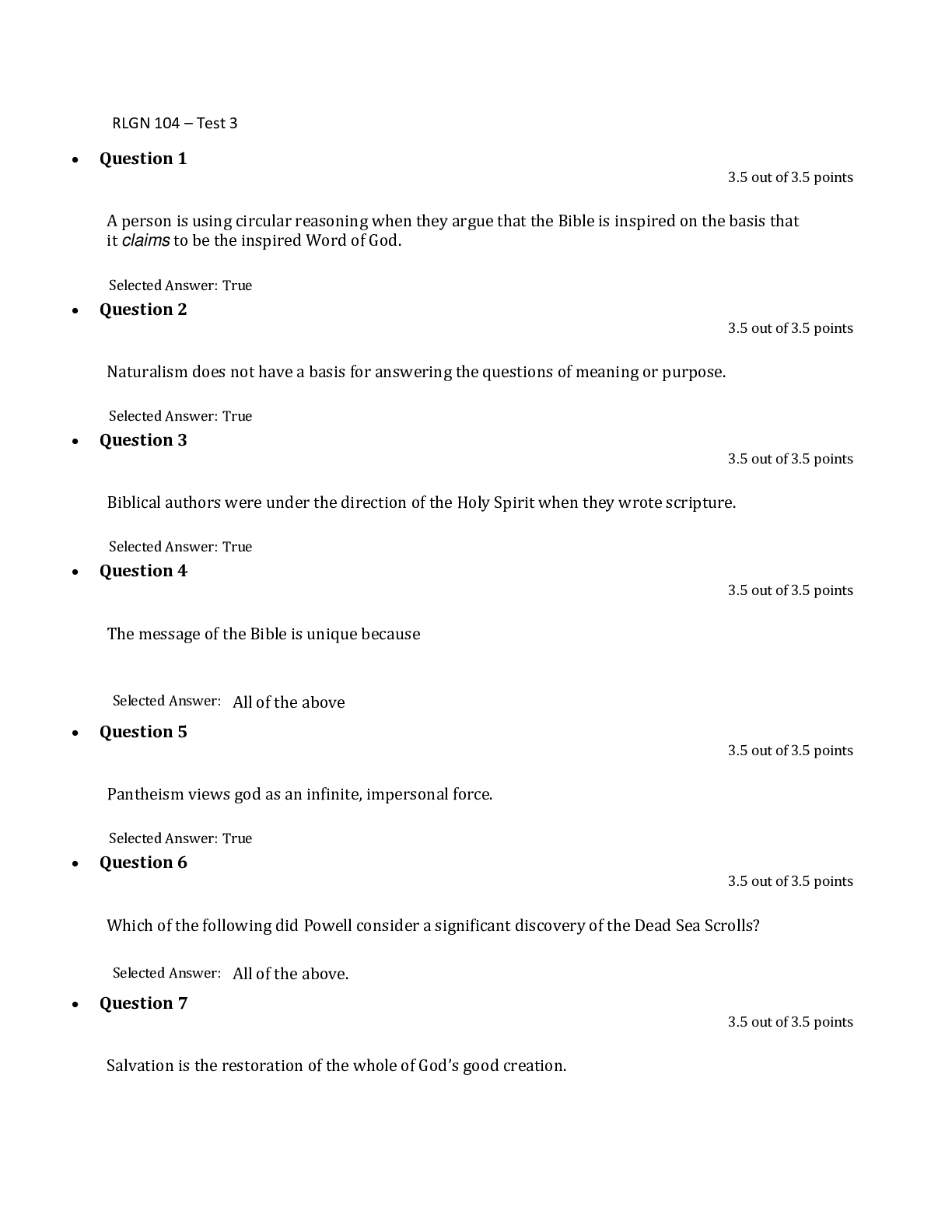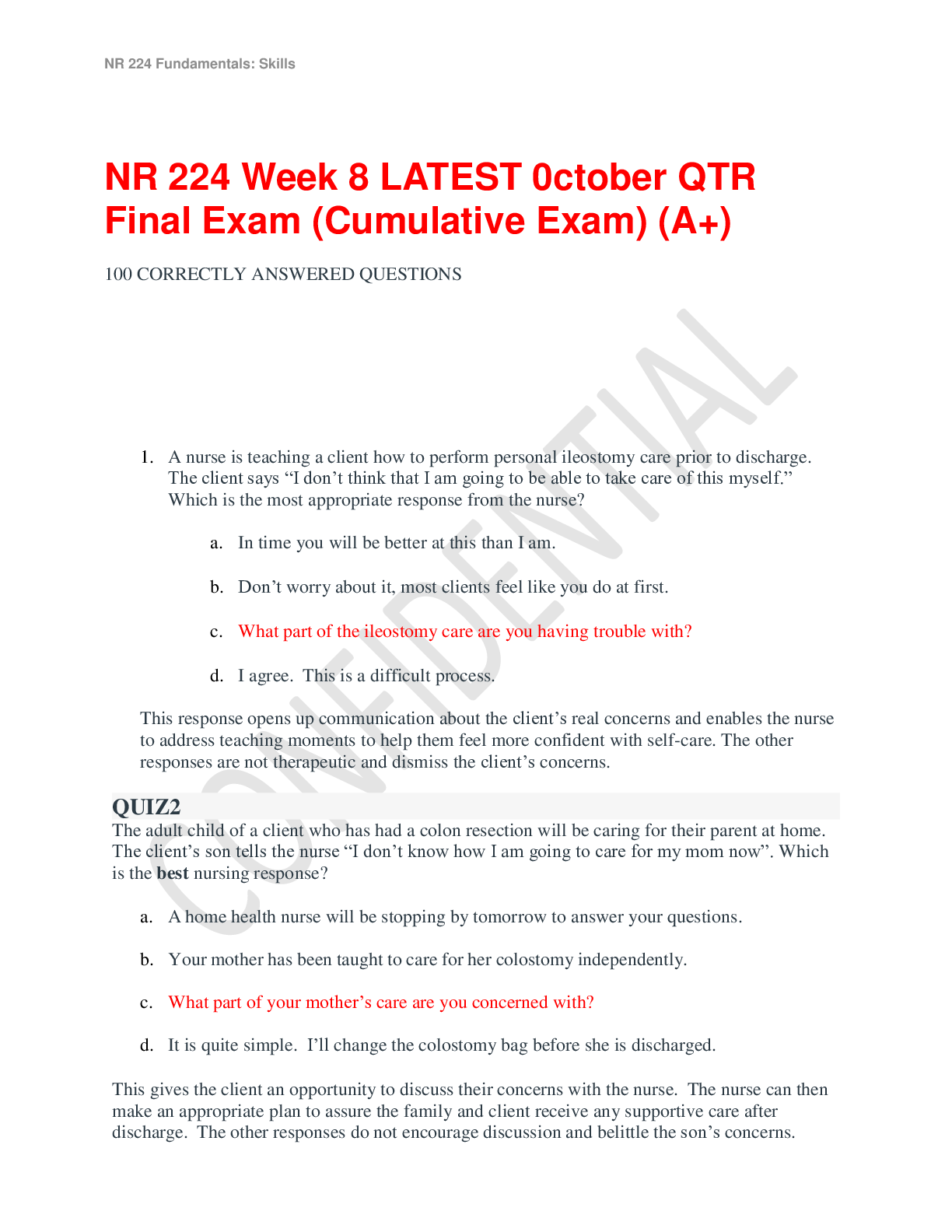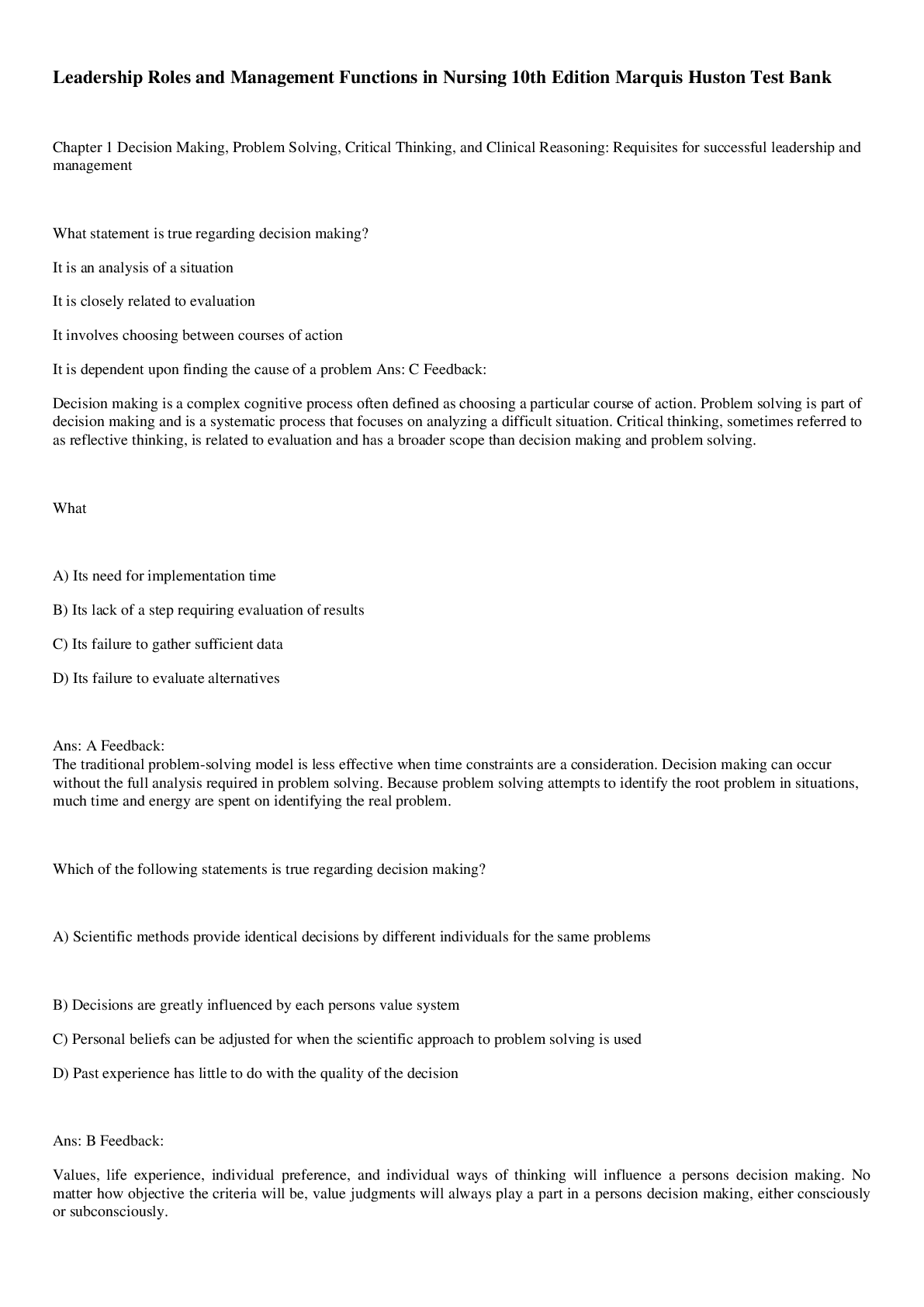*NURSING > QUESTIONS & ANSWERS > FNP1 Final Exam Study (All)
FNP1 Final Exam Study
Document Content and Description Below
Genitourinary: Urinalysis: Specific gravity is a measure of hydration and renal concentration ability. Range = 1.003 to 1.030. Urine Dipstick: Blood - indicates the presence of hemoglobin. �... � Leukocyte esterase – “Pyuria” +WBCs indicates white blood cells (WBCs) in the urine and, if positive, warrants further investigation. inflammation from irritation or infection of vulva, vagina, or urethra; inflammation of bladder or kidneys with or without infection Nitrites - an indirect measure of bacteria in the urine. (Best captured with 1st void). Always confirm either way with a culture if the patient is symptomatic for UTI. (4hour rule). Glucose - Metabolic problem (e.g., diabetes), recent high glucose intake, oral corticosteroids, galactosemia. Ketones - Dehydration, starvation, missed breakfast, strenuous exercise, stress, fever, metabolic problems (e.g., diabetes). Protein – Renal disease, orthostatic proteinuria. Urobilinogen - Hemolytic disease; hepatic disease Bilirubin – Hepatic disease or biliary obstruction. Casts - RBCs, hyaline, waxy, epithelial, leukocyte, or fatty casts are seen in various disease states. Urine culture and sensitivities: remains the gold standard for diagnosing and treating UTIs. If the culture shows greater than 100,000 colonies of a single pathogen in a clean catch urine specimen, greater than 50,000 in a catheterized or suprapubic specimen, or if there are 10,000 colonies of a single pathogen and the child is symptomatic, the child is considered to have a UTI. 24-hour urine collection: Collecting a 24-hour sample of urine is done to determine calcium excretion, the calcium-creatinine ratio, and quantification of protein. Serum or blood urea nitrogen (BUN): estimates the urea concentration in serum or blood and is a measure of toxic metabolites that can cause uremic syndrome. Serum creatinine: in combination with creatinine clearance is used to estimate the glomerular filtration rate (GFR) or kidney function. Serum procalcitonin level: of more than 0.5 ng/mL is an accurate and reliable biologic marker for renal involvement during a febrile UTI, pyelonephritis, and renal scarring and may be useful in the clinical diagnosis and treatment of UTIs. Renal US: provides non-invasive structural information. Urinary Tract Infections: The organism most commonly associated with UTI is Escherichia coli (70%), followed by Enterobacter, Klebsiella, Pseudomonas , and Proteus There are three kinds of UTI in children: (1) asymptomatic bacteriuria - bacteria in the urine without other symptoms, is benign, and does not cause renal injury. If there is an absence of leukocytes on UA, no treatment is indicated. (2) cystitis - an infection of the bladder that produces lower tract symptoms but does not cause fever or renal injury. Outpatient. Treat with P.O. Abx, repeat CLT in 48-72 hours. (3) pyelonephritis - the most severe type of UTI involving the renal parenchyma or kidneys and must be readily identified and treated because of the potential irreversible renal damage that can occur. Symptoms: fever, irritability, and vomiting in an infant. Urinary symptoms associated with fever, bacteriuria, vomiting, and renal tenderness in older children. Uncomplicated – febrile, > 3-6 months, well hydrated, no vomiting/abd pain. Outpatient. P.O./IM Abx, repeat CLT in 48-72 hours. Complicated – febrile, < 3-6 months, toxic, dehydrated, vomiting/abdflank pain. INPATIENT. IV Abx, repeat CLT in 48-72 hours. *US and VCUG if indicated for all cases following treatment. *The most important risk factor for the development of pyelonephritis in children is VUR. *Any child who has acute fever without a focus, FTT, chronic diarrhea, or recurrent abdominal pain should be evaluated for UTI. Complicated UTI is defined as a UTI with fever, toxicity, and dehydration or a UTI occurring in a child younger than 3 to 6 months old. Recurrent UTI - within 2 weeks with the same organism or any reinfection with a different organism. Chronic UTI - ongoing, unresolved, often caused by a structural abnormality or resistant organism. Physical Exam findings: Flank pain (CVA tenderness), fever, Suprapubic tenderness, bladder distention or a flank mass (obstructive signs), mass from fecal impaction. **Fever, vomiting and diarrhea, abdominal/flank pain increase likelihood of pyelonephritis. Confirm UTI with Urine Culture. Serum procalcitonin level of more than 0.5 ng/mL is an accurate and reliable biologic marker for renal involvement during a febrile UTI, pyelonephritis, and with renal scarring. Blood Culture if sepsis is suspected. DDx: urethritis, vaginitis, viral cystitis, foreign body, sexual abuse, dysfunctional voiding, appendicitis, pelvic abscess, and pelvic inflammatory disease. *Phenazopyridine may be given for dysuria. Vesicoureteral Reflux: VUR is regurgitation of urine from the bladder up into the ureters and potentially to the kidney. [Show More]
Last updated: 1 year ago
Preview 1 out of 14 pages

Reviews( 0 )
Document information
Connected school, study & course
About the document
Uploaded On
Sep 21, 2021
Number of pages
14
Written in
Additional information
This document has been written for:
Uploaded
Sep 21, 2021
Downloads
0
Views
53







.png)











.png)

.png)




.png)
.png)

.png)




.png)
.png)

